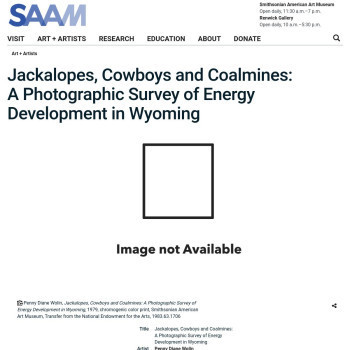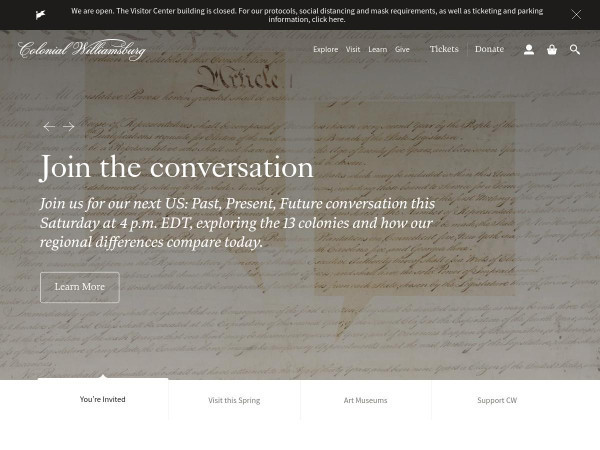ufn44 uln44
Learning Lab Coordinator
Smithsonian Institution
Middle School (13 to 15 years old), High School (16 to 18 years old)
Teacher/Educator
Language Arts And English, Civics, Literature, Cultures, Economics, Social Studies, Geography, Writing, US History, Arts, Other
:
I'm a history-lover, art fan, and bookworm. I taught high school history (U.S. History and World Religions) for ten years in North Carolina, teach currently in Pittsburgh, PA, and am working to help teachers make the most of this new resource!
ufn44 uln44's collections
Alexander Gardner's Photographic Sketchbook of the War
<p>This is a collection of photographic plates from Alexander Gardner's Civil War Sketchbook that can be used for teaching about the Civil War in a number of ways. Students can explore the collection and look for images that help them learn about one of the following themes:</p><p>1) Technology</p><p>2) Military Strategy</p><p>3) Life in Military Camps</p><p>4) Death and Destruction</p><p>5) Photography as Art and Communication</p><p>The plates are in order as they appeared in the book, although some have not been included in order to limit the size of the collection. Note that some of the images have additional information linking to external websites with lesson ideas or simply more background on the particular photograph. In addition, be aware that each plate has two images, the first showing the photograph and the second showing Gardner's caption. The three final photos are not from the sketchbook, but show some of Gardner's more famous images and reveal more about the man himself.</p><p>WARNING: Some of the images in this collection include pictures of the dead on the battlefield, which some viewers may find disturbing. Please carefully consider whether use of this collection is appropriate for your specific audience.</p>
 ufn44 uln44
ufn44 uln44
40
The Ramayana
<p>This teaching collection and student activity includes the resources necessary to teach an EDSITEment lesson on the Ramayana where students read closely to find examples of the Hindu concept of dharma. </p><p>Guiding questions are:</p><ul><li>What is <em>dharma</em>?</li><li>How does the <em>Ramayana</em> teach <em>dharma</em>, one of Hinduism's most important tenants?</li></ul><p>tags: Hinduism, Hindu, India, dharma, Ramayana, rama, epic, Vishnu</p>
 ufn44 uln44
ufn44 uln44
11
The "Wild West"?
<p>The West has always held a special place in American culture. In 1893, Frederick Jackson Turner wrote what is known as the "frontier thesis," arguing that our sense of democracy and hard work has been shaped by experience of survival and growth along the frontier. More than a century later, Americans still idolize the cowboy image and are fascinated by the train robbers, saloons, and violence of the era. How accurate is our mental picture of the "Wild West"? What were the realities of life on the frontier in the late 19th and early 20th century? What was lost and what was gained as America closed out the frontier? Most importantly, why has the West continued to fascinate Americans and play such a prominent role in popular culture?</p>
<p>This learner resource includes images, artifacts, and movies that deal with the concept of the American West. Students will want to read Turner's essay and answer the attached questions. Then, they will focus on choosing images and ideas to include in a movie trailer or poster advertisement that presents a more accurate image of turn of the century western life.</p>
 ufn44 uln44
ufn44 uln44
29
Ancient Rome: Discover the Story
This collection includes objects and artifacts representing life in ancient Rome. Students are challenged to write a creative story or narrative based on the objects in the collection, illustrating Roman life. The last two resources in the collection are a worksheet that teachers may use to frame the assignment and a grading rubric for the assignment.
 ufn44 uln44
ufn44 uln44
12
Hamilton!
<p>Have your students (or you) caught the Hamilton bug inspired by Lin-Manuel Miranda's musical? This collection is filled with resources and teaching ideas about the founding father. With his musical, Miranda has transformed teaching the Founding Fathers from distant and un-relatable to a relevant story of a hustling immigrant whose rise helps progress the American Revolution and set the new nation on track to become the economic powerhouse that it remains today.</p>
<p>Tags: Alexander Hamilton, ten dollar bill, Aaron Burr, duel, treasurer, financial plan, Federalist</p><p>#SmithsonianMusic<br /></p>
 ufn44 uln44
ufn44 uln44
14
Was Reconstruction a Failure?
The period after the Civil War, known as Reconstruction, had lofty goals for reuniting the nation and preserving the new rights given to African-Americans. For a time, these goals were achieved and three important amendments were made to the Constitution. However, by 1876 Reconstruction was considered over and much of the progress that had been made was undone. This collection of detailed prints and cartoons highlight many different aspects of Reconstruction and asks students to consider the overall result of Reconstruction. Students can analyze each one using the embedded questions.
 ufn44 uln44
ufn44 uln44
8
Tools of the Labor Movement
The United States labor movement began in full force during the late 19th century and peaked during World War II. Workers learned that by joining together in unions, they could exert more pressure on employers and the government to protect their rights and improve labor conditions. This collection includes a variety of resources related to the United States labor movement, particularly the various tools and strategies used to create change.
Guiding questions to consider are:
-What rights do workers desire?
-How can labor unions influence employers, government, and the public?
-What tools and strategies are most effective for improving working conditions? Consider: boycotts, picketing, appeals to the media, strikes, walk-outs, and slow-downs.
-How does the public perceive labor unions? How does this impact their results?
-Are women and minorities included in the labor movement? Were they always?
 ufn44 uln44
ufn44 uln44
25
Bushido, Bun, and Bu: Life as a Samurai
This collection includes resources reflecting the ideal characteristics of a Japanese samurai. After reviewing the resources in this collection, students will be able to:
-analyze the changing role of the samurai in Japanese society
-define and give examples of bushido, bun, and bu
-compare the expectations for samurai with those of other social groups
Students will begin by visiting two websites in order to gain background information on samurai. They will then read an excerpt from The Way of the Samurai and answer questions. Next, they will review a series of resources and determine whether they represent bushido, bun, or bu. Finally, students will begin a comparative research assignment.
 ufn44 uln44
ufn44 uln44
16
How We Vote
<p>This collection invites users to explore how Americans have voted throughout our history and the innovations that have improved the voting process. Students will closely investigate images from the 19th and 20th century in order to determine potential flaws and improvements in the democratic process. Links to websites for additional reading are included as well as assessments and a possible extension activity. </p><p>Guiding questions:</p><p>-How has the process of voting changed in the last two centuries? Consider who, what, when, where, why, and how when answering this question.</p><p>-How have technological changes enhanced voting? What challenges remain?</p><p>Tags: civics, elections, campaigns, vote, ballot, ballot box, democracy, electoral process, change over time, cause effect</p>
 ufn44 uln44
ufn44 uln44
11
Timeline: Causes of the Civil War
<p>This collection includes artifacts, stamps, political cartoons, portraits, and videos representing various long-term and short-term causes of the Civil War. After reviewing the collection, students will sort resources into chronological order, focusing on continuity and change over time. </p><p>Tags: compromise, Civil War, John Brown, Fort Sumter, Ft, Abraham Lincoln, Sumner, Brooks, Taney, Dred Scott, 1850, 1860, secession</p><p><br /></p><p>Additional teaching ideas are listed in the Notes to Other Users section.</p>
 ufn44 uln44
ufn44 uln44
30
My Favorite Things
<p>In 2014-2015, artist and illustrator Maira Kalman created a personal collection that was displayed at the Cooper Hewitt, Smithsonian Design Museum. Her collection drew from across the Smithsonian museums and reflected a life story. Her inspiration and thinking is shared in the video resource that begins this collection, and some of the objects that she included (or similar ones) are shared.</p><p>Can you create your own collection of "favorite things"? What story would it tell? What people, places, and objects would it connect to? What emotions would it evoke?</p><p>tags: design, art, activity, personal, inspiration, creativity, biography</p>
 ufn44 uln44
ufn44 uln44
6
Slavery and Slave Resistance in the Colonies
<p>This collection includes items that will help you understand the conditions that led to the growth of slavery and the ways in which enslaved persons resisted slavery. <br /><br />Guiding Questions:</p>
<ol><li>Why did slavery become increasingly important, especially in the Southern colonies?</li><li>How did "slave laws" support the system of slavery?</li><li>What does it mean to "resist" slavery? </li><li>How did white slave-owners respond to such actions? </li><li>Is maintaining a distinct cultural heritage a form of resistance? Why or why not? </li><li>How do religion, art, and music encourage resistance?</li></ol><p>You will answer your group's assigned question using at least 3 pieces of appropriate evidence from the collection included here. </p>
<p><br /></p>
<p><br /></p>
<p><br /></p>
 ufn44 uln44
ufn44 uln44
13













